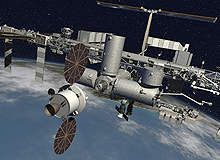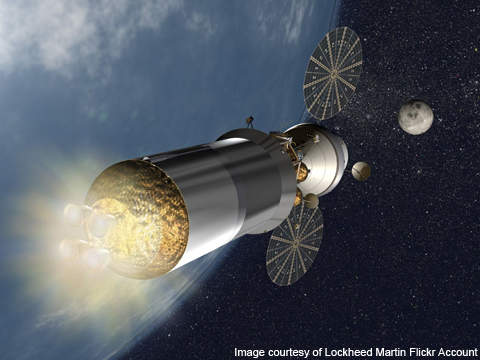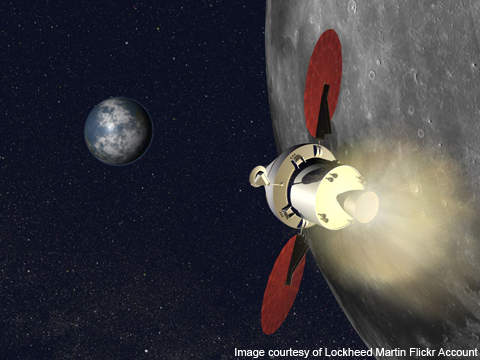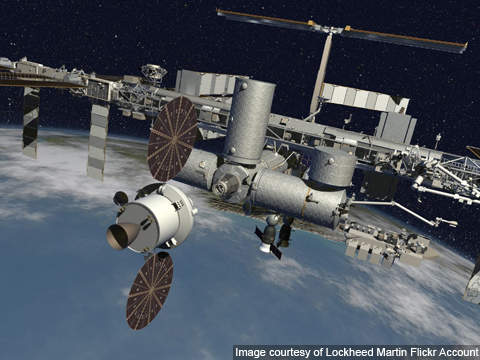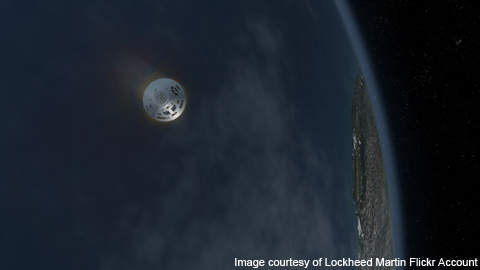Orion spacecraft is a crew exploration vehicle (CEV) designed and manufactured by Lockheed Martin for NASA to transport crew or cargo to the International Space Station (ISS), the Moon and Mars.
Derived from its predecessor Apollo Command Module, the spacecraft is designed to replace the Orbital Space Plane (OSP). Orion was first launched on a shuttle derived heavy lift vehicle from Launch Complex 39 of Kennedy Space Center in 2014.
NASA completed a major launch-abort system test in July 2019, successfully establishing the crew safety features of Orion’s abort system.
Orion is expected to land on the Moon and the Mars in 2020 and 2030, respectively.
Orion programme history
Development of the Orion CEV began as part of the Constellation Program launched by NASA. The vehicle was initially intended to be carried on the piggyback of the Ares I rocket launcher.
The programme was, however, cancelled by the US Government in February 2010 resulting in the restructuring of the launch vehicle. NASA later launched Orion on the piggyback of a shuttle derived heavy lift vehicle, in 2014.
Orion spacecraft design
The Orion spacecraft has been designed to serve for 210 days. Its preliminary design review (PDR) was completed in September 2009.
The four major components of the spacecraft are the launch abort system (LAS), the crew module (CM), the service module (SM), and the spacecraft adapter.
The LAS is an emergency escape system, which separates the crew module from the launch vehicle using a solid rocket powered launch abort motor (AM). It is equipped with an attitude control motor and a jettison motor.
NASA has unveiled a decision to deploy a Max Launch Abort System (MLAS) as a replacement for the LAS. The MLAS is equipped with four solid rocket motors integrated 900 from each other for separating the crew module from the launch vehicle during emergency evacuations.
The crew module accommodates four to six crew members. It is made up of aluminium and lithium alloy and enclosed with a silicon fibre Avcoat ablator heat shield. The structural framework of the CM was completed in June 2010.
The service module of Orion is equipped with propulsion systems, batteries, reaction control systems and waste heat management systems. It is cylindrical in shape and constructed with aluminium and lithium alloys.
Development of NASA’s Orion spacecraft
NASA proposed a project to develop the Orion crew exploration vehicle in July 2005. Boeing and Lockheed Martin were considered for the development contract. The agency, however, selected Lockheed Martin and awarded a $3.9bn contract in August 2006 to design, manufacture, test, and deliver the spacecraft.
The spacecraft will be built in two versions namely Lunar Orion and Mars Orion. Lunar Orion will carry four astronauts to the Moon, while Mars Orion, destined for Mars, will accommodate a crew of six astronauts.
An airbag landing system was removed from the Orion in August 2007 to reduce the overall weight of the spacecraft. The solar array design testing was successfully completed in October 2008. The maiden launch abort test was conducted by ATK in November 2008.
The environmental testing was conducted by NASA between 2007 and 2011 at the Glenn Research Center Plum Brook Station in Sandusky, Ohio. Abort flight tests were conducted by NASA between 2008 and 2011 at the White Sands Missile Range (WSMR) in New Mexico. The Post Landing Orion Recovery Test (PORT) commenced in March 2009 using an 8,164kg boilerplate built by the US Navy.
In February 2011, the first Orion was shipped from Michoud Assembly facility to Lockheed Martin’s Denver facilities to test the spacecraft under various harsh environments.
Features
The Orion spacecraft features a glass cockpit, roll, pitch, and yaw thrusters, an autodock system and an automated transfer vehicle. It is equipped with TTEthernet built by TTTech Computertechnik for real time communications.
The electrical system comprises two gallium arsenide solar array panels and lithium batteries.
Contractors
The subcontractors involved in the Orion project include Aerojet, Hamilton Sundstrand, Honeywell, United State Alliance, and Orbital Science Corporation.
Aerojet supplied the propulsion systems, reaction control system and jettison motor. The command and data handling system, displays, flight control systems, avionics and navigation systems were supplied by Honeywell.
United State Alliance was responsible for the assembly, integration and processing of the Orion capsule at the Kennedy Space Center.
Orbital Science was the prime contractor involved in the manufacturing of Launch Abort System. ATK received a $62.5m sub-contract from Orbital Science in July 2007 to design, build, examine, and supply the launch abort motor.
Hamilton Sundstrand provided fire detection and suppression system, carbon monoxide removal or humidity control system, pressure control system, atmospheric monitoring system, cabin air ventilation, and potable or cooling water storage as part of a $700m contract signed in August 2006.

